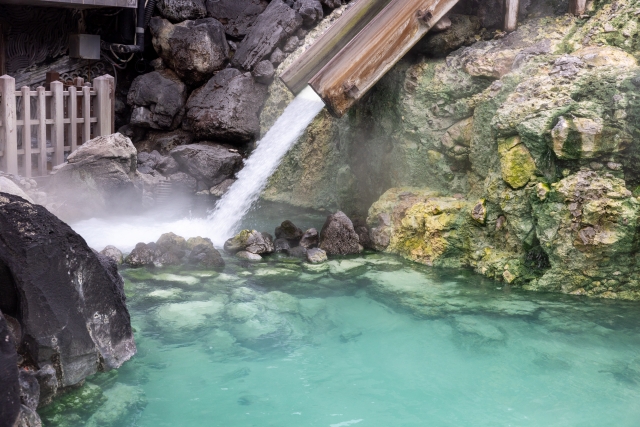There is nothing more quintessentially Japanese than experiencing an “Onsen” (pronounced ‘On-sen’) or a “Sento” (pronounced ‘Sen-to’).
let’s equip you with some basic knowledge and etiquette tips to ensure a pleasant bathing experience.
Understanding Onsen and Sento
In Japanese, “温泉” translates to “Onsen,” which refers to a hot spring, while “銭湯” or “Sento” represents public bathhouses.
Both are integral parts of Japanese culture and have their distinct charm and etiquette.
Onsen: A Tryst with Nature
Onsen are naturally occurring hot springs scattered across Japan. With the country located in a volcanically active region, there are thousands of these thermal baths, each boasting unique mineral compositions. Onsen are traditionally outdoor baths (“rotenburo”), allowing you to soak in nature’s bounty while basking in the scenic beauty.
Sento: A Slice of Community Life
Sento, on the other hand, are indoor public baths, an urban phenomenon born out of necessity where not every household had a bath. Although most homes now have bathing facilities, Sento remain a hub of community interaction and a place for relaxation.
Japanese Bathing Etiquette: What to Do and What Not
Whether you’re heading to an Onsen or a Sento, it’s essential to be aware of the basic etiquette. This not only helps maintain harmony but also enhances your bathing experience. Here’s a list of do’s and don’ts to keep in mind:
| Do’s | Don’ts |
|---|---|
| Do wash and rinse yourself before entering the bath. | Don’t wear swimsuits or any clothing in the bath. Onsen and Sento are enjoyed naked. |
| Do tie your hair up if it’s long. | Don’t put your towel in the water. You can place it on your head while bathing. |
| Do drink plenty of water before and after the bath to keep yourself hydrated. | Don’t jump into the water or swim. It’s a place for quiet relaxation. |
Visiting an Onsen or Sento: A Step-by-Step Guide
Armed with the basic etiquette, let’s walk you through the steps of visiting an Onsen or Sento:
- Pay the bathing fee at the entrance. In Onsen, it’s often at the reception desk, while in Sento, it’s usually a vending machine.
- Proceed to the changing area. Remember, baths are gender-segregated, so follow the signs for “男” (men) or “女” (women).
- In the changing area, undress and keep your belongings in the provided lockers or baskets. Take a small towel with you, leaving any large towels and clothing in the changing area.
- Before you enter the bathing area, rinse and clean your body at the washing stations. Use the stool and the shower, making sure not to splash water on others. Once clean, rinse the stool and the area around you.
- Now, you’re ready to enter the bath. Do so slowly, allowing your body to adjust to the temperature. Remember, it’s a place for quiet relaxation, so keep your voices down.
- Once you’re done, gently rise from the water, trying not to splash. Wipe off excess water with your small towel before returning to the changing area.
Unwritten Rules
Some Onsen and Sento may have local rules or traditions. So, it’s always good to observe others or ask when in doubt.
Also, in Japan, tattoos are often associated with the yakuza (Japanese mafia), so there are sometimes restrictions on bathing for people with tattoos. However, many places are now becoming more tattoo-friendly, especially for foreign visitors.
Embarking on an Onsen or Sento journey can be an enriching experience. With this guide at your disposal, we hope you enjoy this warm and relaxing part of Japanese culture to the fullest. Happy bathing!



comment